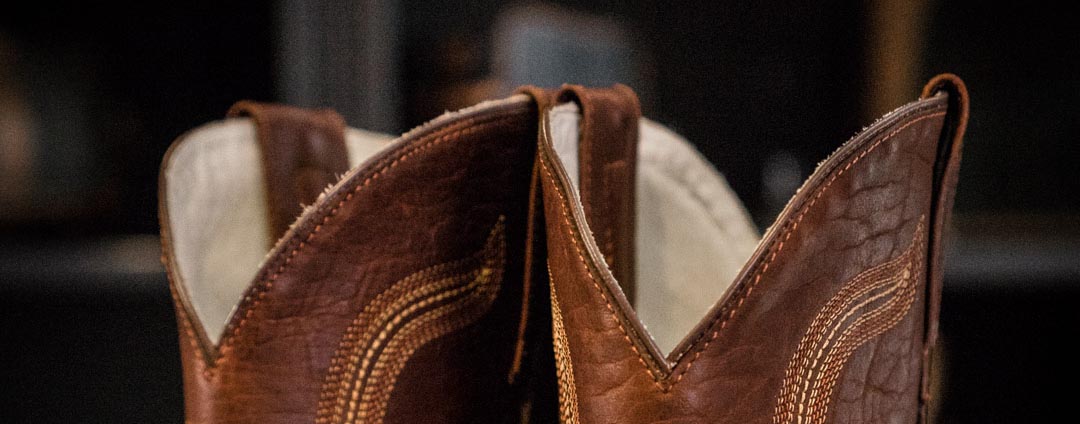Your Cart is Empty
You are $99.00 away from free shipping!
Your Cart is Empty
You are $99.00 away from free shipping!

The faux leather industry has experienced “advancements” and “production improvements” over the years. It has even experienced a virtual identity overhaul with the viral catchphrase “vegan leather” making the rounds.
The main difference between the faux leather and real leather is real leather is made from animal hides, such as buffalo or cattle. Faux leather on the other hand is made from polyvinyl chloride (PVC) or polyurethane and is not natural. Now that you know the main difference, here’s the rundown on faux leather vs. leather.
Look at the surface of the leather. Real leather is a natural material made from real animal skin. Its surface structure will not be completely uniform and will include blemishes and imperfections. (Hints of imperfections are a good sign in leather.) When you run your fingers across real leather, it doesn’t feel perfectly smooth. Press your finger into the leather - the surface will stretch and wrinkle a bit, like skin. Finally, smell it. If you’ve smelled real leather before, you know it has a distinctive “leathery” smell - it has a natural, organic, skin scent that cannot be accurately manufactured.
The surface of synthetic leather is uniform. A very regular, even texture pattern is a sign that it’s a machine-made piece. When you run your fingers across faux leather, it feels cold and unnaturally even. Also, when you press your finger into the surface, it doesn’t act like skin. Rather than stretching or wrinkling, the synthetic material simply depresses under your finger while still retaining its shape. Now, smell it. There is no reliable way to fake the smell of real leather. If you smell a plasticky, chemical odor, you can bet it’s synthetic.
Real leather far outlasts its counterparts in long term endurance, and more than that, the more you use it, the better it looks. Given the proper care, the same wear and tear that would wear out and tear up another product will instead develop in real leather the character and patina that make it even more valuable and desirable over time. You can learn how to take care of real leather with our guide on how to care for leather.
Simply put, faux leather is not made to last like real leather. While it doesn’t need nearly the care or maintenance of real leather, it also does not last nearly as long. And unfortunately, when it begins to wear out, it does not usually wear out attractively. It can be cleaned and protected to an extent, but not quite like real leather. To clean faux leather, simply use warm water with some soap and a non-abrasive cloth to wipe the exterior clean. Finish by drying it off with a soft cloth. This helps stop the general wear and tear and everyday marks from building up and making the surface look grubby.
When sourced from sustainable ranches and tanned naturally, real leather actually has the potential to be less damaging to the environment than most faux (or “vegan”) leathers (excluding the rare vegan leather options made from cotton or cork). It is also worth noting that most hides used in leather production come from cattle that were raised for beef and milk—so the cows didn’t actually die just to become coats and purses (and not using their hides could actually be considered wasteful).
Most faux leather is made from polyvinyl chloride (PVC) or polyurethane. If the only environmental impact you’re considering is whether an animal skin is used in the leather, then it’s clearly true that faux leather has a smaller impact than real leather. However, the sorts of chemistry used in the manufacturing process have a negative environmental impact, which affects everyone alive on the earth - including animals. Faux leather products also wear out and need to be replaced much more often than real leather, which just compounds the impact. Real leather products can last for decades where faux leather may only last for a few years at most.
Whichever you choose, it’s important to know what you’re getting. When it comes down to faux leather vs leather, we’ll always choose the high quality real leather that you’ll find in our leather bags and accessories at Buffalo Jackson. For some examples of high quality, real leather, check out our collection of rugged and vintage leather goods.
Orders shipped to Canada may be subject to import duties, tariffs, and taxes charged by Canadian customs. These fees are not included in our prices or shipping costs. You will be responsible for any additional charges upon delivery. Please review local customs regulations before placing your order.

